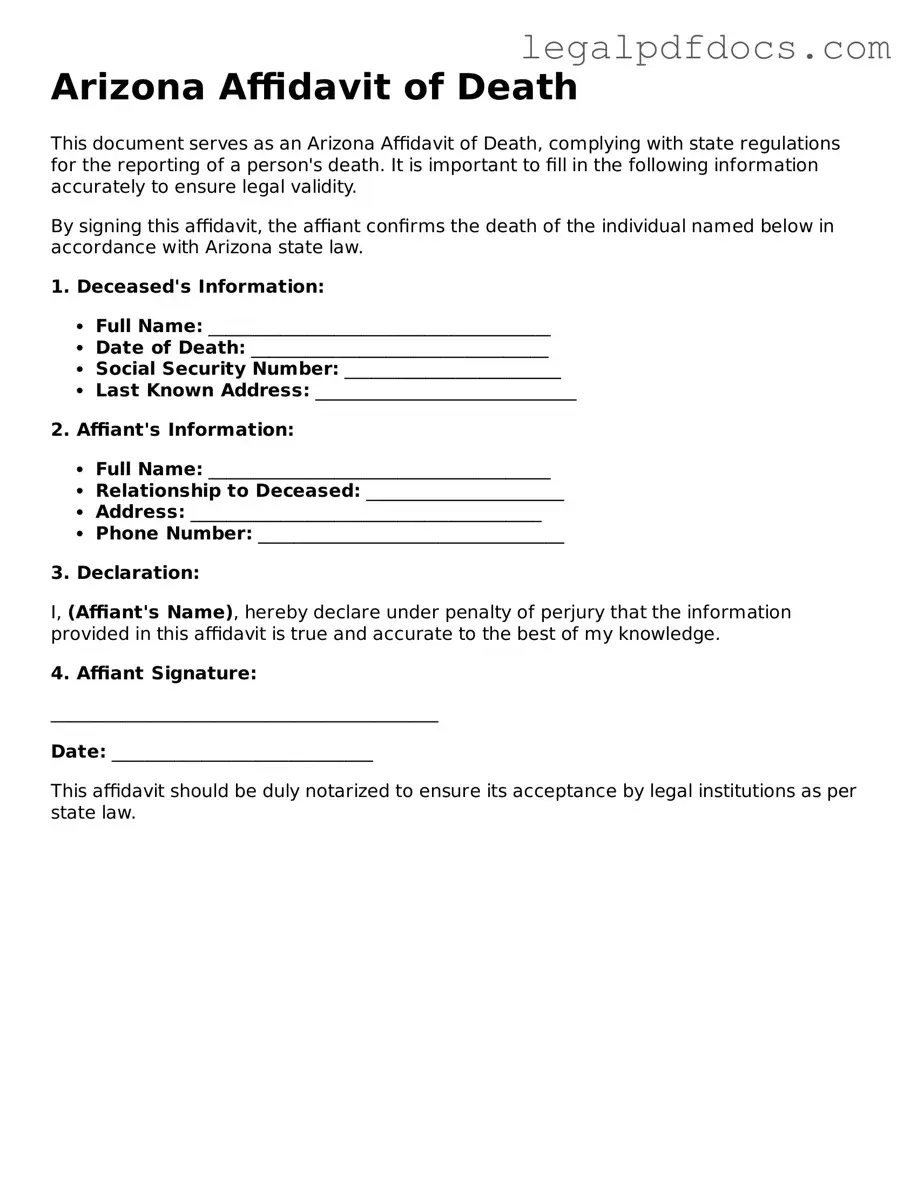In Arizona, the Affidavit of Death form serves as a crucial legal document that assists in the process of settling the affairs of a deceased individual. This form is typically utilized when a person has passed away, and it is necessary to establish the fact of their death for various legal purposes, such as transferring property or settling debts. The affidavit is often signed by a family member or another individual who can confirm the death, providing essential details such as the deceased's name, date of death, and other pertinent information. By filing this document, the affiant helps streamline the administrative processes that follow a death, ensuring that the deceased’s estate can be managed in accordance with their wishes and applicable laws. Understanding the significance of the Affidavit of Death is vital for families navigating the complexities of loss, as it not only serves a legal function but also aids in providing clarity and closure during a challenging time.
